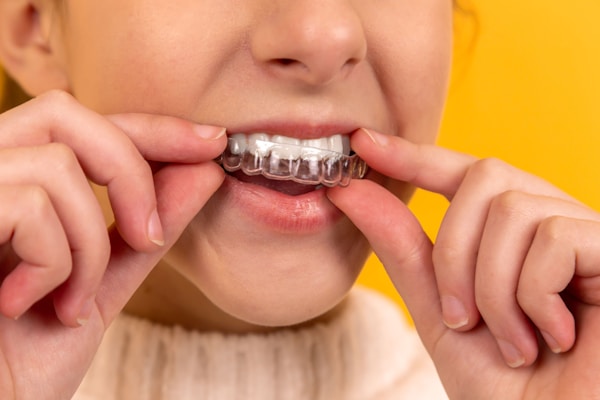Orthodontic treatment is a type of dental treatment that corrects teeth alignment. It’s used to correct a wide range of dental problems, including crooked teeth, overbites, and underbites. Orthodontic treatment is a common treatment for children, but it can also be used for adults. The process of orthodontic treatment can be daunting, but it’s essential to understand the process to make sure you are getting the best possible care. Keep reading to learn more about the process of orthodontic treatment.
What is orthodontic treatment?

Orthodontic treatment is a process that helps to correct teeth alignment. Treatment is often recommended for children, adolescents, and adults who have crooked, crowded, or protruding teeth. Individuals will have braces or other devices to move teeth into their proper positions. The diagnosis phase of orthodontic treatment begins with an examination of the teeth and gums. X-rays and impressions may also be taken to help determine the best course of treatment.
If orthodontic treatment is recommended, the patient will begin wearing braces. Braces are metal brackets that are attached to the teeth with dental adhesive. Wires are then threaded through the brackets and adjusted periodically to help move the teeth into their correct positions. Orthodontic treatment usually takes 12 to 18 months, although it may take longer for more serious cases. Surgery may also be necessary to correct jaw alignment or bite problems. In general, treatment time depends on the severity of the problem, how much work is needed to fix it, and how well the patient cooperates with the treatment. The orthodontist will adjust the wires every few weeks to move the teeth into the correct position. Patients usually need to visit the orthodontist every four to six weeks for adjustment appointments.
What brace options are available?

There are several different types of orthodontic treatments available, including traditional braces, Invisalign, and metal braces. Traditional and metal braces are the most common type of orthodontic treatment. For those who want a more traditional look, metal braces are the best option for you. The brackets of metal braces are usually stainless steel but can also be made of titanium, gold, or platinum. Metal braces are more visible than other braces, but they are also the most durable. They usually require monthly adjustments from your orthodontist, but they can be used to correct a wide variety of orthodontic problems.
Invisalign is a newer orthodontic treatment that uses clear plastic trays to straighten teeth. Invisalign is effective and relatively comfortable, but it can be expensive. The process of orthodontic treatment usually takes between one and two years, but this varies depending on the severity of the case.
What is the retention phase?

The retention phase of orthodontic treatment is crucial for ensuring that the teeth stay in their new positions. After the braces removal, the patient will need to wear a retainer to keep the teeth in place. The type of retainer depends on how much movement was required to correct the bite. If only mild movement was needed, a clear retainer is worn. If more movement is necessary, a wire retainer is worn.
There are different retainers, and your orthodontist will choose the best one for you. The most common type is the Hawley retainer, a plastic tray that fits over your teeth and is held in place by wires. Other types of retainers include the Essix retainer, a transparent plastic retainer that covers the teeth, and the bonded retainer, a wire attached to the back of the teeth. It is vital to wear your retainer as prescribed. Otherwise, the teeth may move back to their original positions. If you have any questions or concerns about your retainer, talk to your orthodontist.
Conclusion
Overall, orthodontic treatment is essential because it can help correct various dental and facial problems. The orthodontic treatment process is often lengthy, but it can be well worth it in the end.













